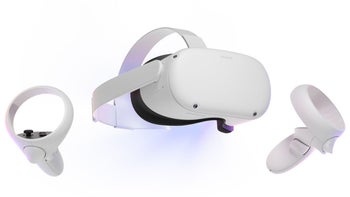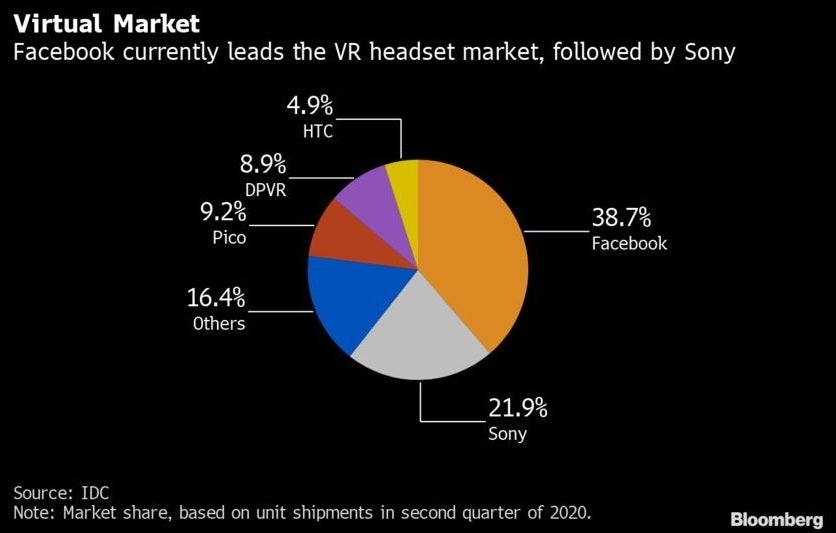Apple plans to get consumers ready for Apple Glass by launching pricey VR headset next year

A fresh report published today by Bloomberg gives us some exciting information about what Apple has in mind as far as headsets are concerned. A few years ago, there was one report that said Apple would release a Virtual Reality (VR) based headset followed the next year by the Augmented Reality (AR) focused Apple Glass. If you're not sure what the two realities bring to the table, VR completely covers up your real-world view and creates a 3D environment that your mind believes is real enough to navigate. AR uses a real-world view which is enhanced by computer-generated information for your eyes, ears, and more.
Apple will reportedly release a VR headset in 2022 to prep consumers for its AR Apple Glass
Bloomberg's report repeats that aforementioned roadmap by calling for Apple to release an expensive VR headset as soon as next year. The tech giant has allegedly been conservative with its sales projections for the headset with expectations that it could ring up one unit per day in each Apple Store. With 500 units, sales from Apple's retail locations would add up to 180,000 a year. That, of course, doesn't take into account purchases made from other sales channels. The device is believed to come with a price tag higher than the competition's which means we should expect the headset to cost $1,000 or more. The competition includes VR headsets from Facebook's Oculus, Sony's PlayStation VR and the Vive headsets from HTC. Today's report says that Apple's prototype VR headset resembles the Oculus Quest (pictured at the top of this article).

Facebook's Oculus has the leading market share in the VR headset industry
The headset reportedly sports the codename of N301 and is said to be in a "late prototype stage." Still, it is not too late for Apple to make changes or drop the whole project entirely. The device has been tested with Apple's new M1 chip which was designed by the company to replace Intel components on some Mac models. The M1, like the A14 Bionic that powers the iPhone 12 series, is built on the 5nm node. But instead of the 11.8 billion transistors employed on the A14 Bionic, the M1 is packed with a whopping 16 billion transistors. And Apple has supposedly designed a fan into the headset to allow the product to run cool. Apple traditionally stays clear of using a fan on its mobile devices.
The original design, which included a fan and the heavy components required to run the product, made the headset too heavy causing neck strain. But Apple eliminated the extra space usually reserved for those who wear glasses. Instead, the firm came up with a system that allow custom prescription lenses to be placed over the VR screens. Apple is investigating the logistics of offering the lenses and is determining what it needs to satisfy regulatory agencies in different countries. The product has a fabric exterior and one prototype included external cameras to allow some AR features to work. The cameras could also be used to track the placement of a user's hands. And one feature allegedly being tested for text input could end up on the iPhone. The user would draw letters, numbers, and punctuation in the air and have it appear on the headset's screen.
Apple is also considering adding an App Store for the device which is said to run an operating system called rOS (Reality Operating System). This is the same OS that has been rumored to run the AR powered Apple Glass.
Instead of hitting a grand slam as it did with the iPhone, Apple is looking at the VR headset as a niche product that will get developers and consumers ready for its AR glasses that have been dubbed "Apple Glass." The AR glasses are considered to be more of a challenge for Apple because of the technology involved. Google Glass had high expectations when launched in 2013 fueled by a video that showed how the product could be used on a typical day. But consumers had issues with the pricing ($1,500), the process of getting fitted for the device, and the concern from others that they were secretly being caught on video. While Google Glass is still used by manufacturing companies, Apple will need to make its glasses more consumer friendly. That is partially the point of prepping consumers with the VR handsets.












Things that are NOT allowed: